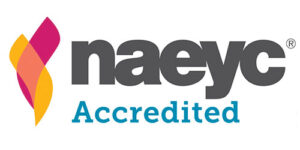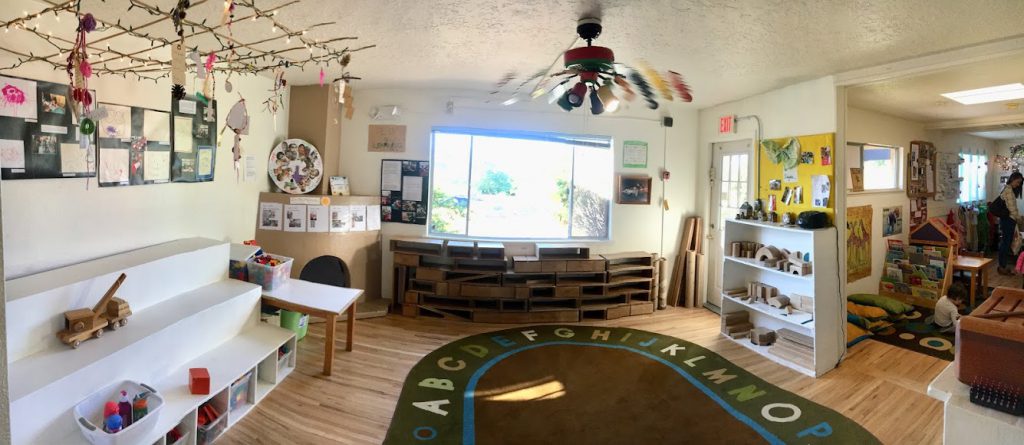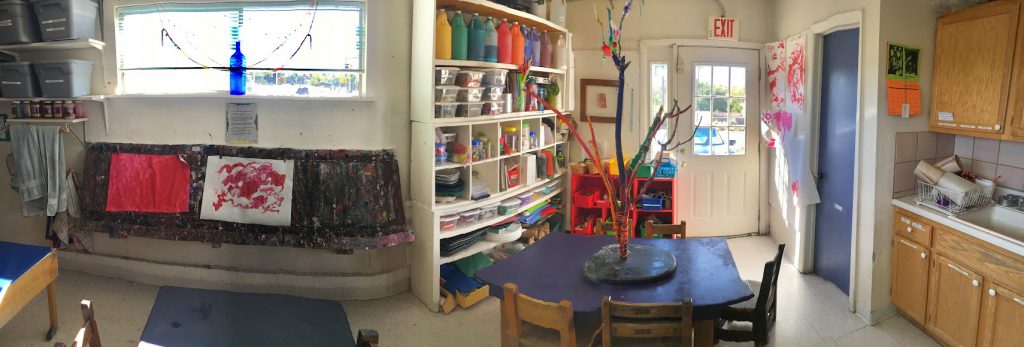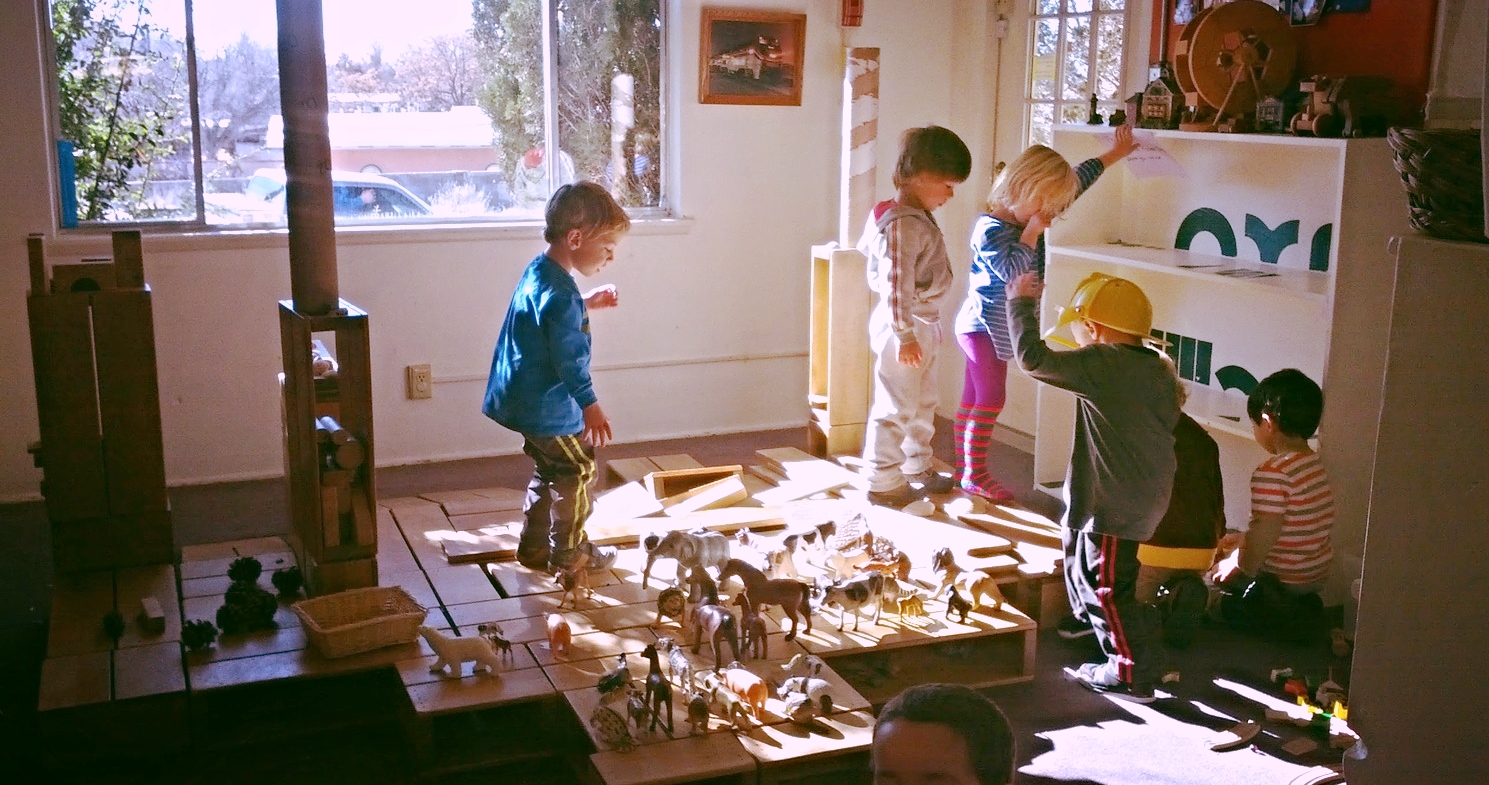
A child loves his play, not because it’s easy, but because it’s hard.
Benjamin Spock, American pediatrician
The Block Room:

Within this, our largest indoor area, we have a house keeping section, a large block area, small block area, a wide range of manipulative toys (lego, puzzles, cuisenaire rods, etc.), a science area (live plants, small animals, rocks, shells, prisms, scales, etc.), a dress up area, mailboxes for the children and a library area.
The Art Room:

Open every day, this area is always a hive of activity, with a sand and water table, large communal easel, a recycled materials center and art materials galore.
The Yard:

Outside, the large play structure, wooden play house, sand box, woodworking table, monkey bars, worm bin, flower beds and a fleet of trucks, trikes and wagons keep our young ones entertained every day.
THE VALUE OF PLAY
The value of Play. Do you ever wonder what your child is learning when he plays? Have you ever heard the expression “Play is child¹s work?” When a child plays he is expanding his language and manipulating objects to attempt to understand his world. When he uses a toy to symbolize something else (a block becomes a telephone), he is learning the nature of symbols (understanding the letter “B” corresponds to a sound). Creating a play script with other children and working out complex social problems within the play enhances a child¹s social skills. Children get to try out different roles that help them understand their world. What does Daddy or Mommy or baby do? Balancing blocks and seeing relationships between different blocks are the beginning of the development of math skills. When a child plays vigorously outdoors, he use large muscles that are not normally used (bike riding, swinging, running). His physical development is strengthened. There are many kinds of play. Functional play comes first in a child¹s development. This is when a child explores an object and tries to gain information about it (what does this sand do? Does it pour, stick together, and taste good? Etc.). The next step in a child¹s development are the more complex types of play: constructive play (building or making something) and then dramatic play (pretending). During constructive and dramatic play a child builds on the knowledge he has gained during functional play.
Many children engage in solitary play. They talk to themselves when they are alone. Sometimes they are manipulating toys that take on roles, and sometimes they have imaginary playmates. This is called “private speech.” Children especially use private speech when they are working on difficult tasks. “Private speech” is a problem solving tool that researchers find essential to a child¹s growth and development.
Other researchers find “that preschoolers who spend more time at socio-dramatic play are advanced in general intellectual development… and young children who especially enjoy pretending score higher on tests of imagination and creativity…” (Scaffolding Children¹s Learning, L. Berk and A. Winsler)
Play is very important in an early childhood curriculum. How does play relate to a child-centered curriculum, based on child development?
Play is simply not a “free-for-all” in a chaotic unplanned environment. Play is a carefully planned opportunity in a classroom, designed with each child’s developmental needs in mind. “Development involves changes or shifts in the way a person organizes experiences and copes with the world.” “Stages [of development] are approximate and only loosely related to age. Individuals are never at a fixed point on a straight line of development, but operate within a range of possibilities. No one really knows how one moves from one stage of development to the next. But we do know that the motivation to engage actively with the environment is built into human beings.” (Exploration With Young Children, Bank Street College of Education, pp16-17.)
Therefore it is the teacher’s role to know the patterns of each child¹s development and the cultures from which they come. Listening and observing each child carefully is necessary in a child-centered program. It is the teacher’s role to create an environment that allows each child to play and interact with materials and other persons that enhance his development. Thus the curriculum must change year by year and day by day and minute by minute to reflect the needs and interests of the children.
Lynn Kelly, founder La Casita Preschool

